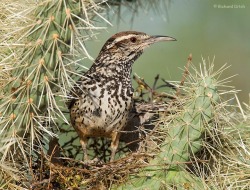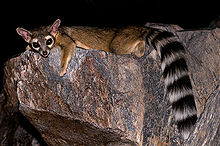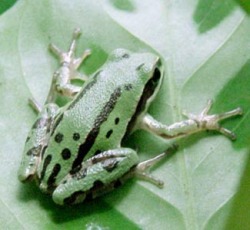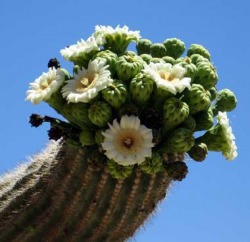State Symbols of Arizona

Cactus Wren
State Bird Cactus Wren
State Mammal Ringtail
State Reptile Arizona Ridgenose Rattlesnake
State Amphibian Arizona Tree Frog
State Fish Arizona Trout
State Flower Saguaro Cactus Blossom
State Tree Palo Verde
State Fossil Petrified wood
State Gemstone Turquoise
State Mammal Ringtail
State Reptile Arizona Ridgenose Rattlesnake
State Amphibian Arizona Tree Frog
State Fish Arizona Trout
State Flower Saguaro Cactus Blossom
State Tree Palo Verde
State Fossil Petrified wood
State Gemstone Turquoise
For more symbols, go to: http://www.netstate.com/states/symb/az_symb.htm
Petrified Wood

Who would think there was a state fossil. Well, there is, and Arizona's is petrified wood. And, something to clear up- it isn't wood at all! It is actually stone! This happens when wood, mud, water, and volcanic ash come together to start petrification.
When wood falls through a stream, it collects mud on the way. If it contains volcanic ash, then you are ready to go! The ash will decompose, leaving chemicals that go in the water and mud. When the water gets in the wood, it forms quartz crystals, which are very brittle. Over time, it encases the wood and turns it into stone. There is also artificial petrified wood (see link).
When wood falls through a stream, it collects mud on the way. If it contains volcanic ash, then you are ready to go! The ash will decompose, leaving chemicals that go in the water and mud. When the water gets in the wood, it forms quartz crystals, which are very brittle. Over time, it encases the wood and turns it into stone. There is also artificial petrified wood (see link).
Cactus Wren

Arizona is a very hot state, so it isn't a surprise that the state bird, the cactus wren, live in the cacti of the desert. They are the largest wrens in North America, and can withstand no freestanding water for about a week. They have heavy dark spots and a white streak near there eye. They are known to be very curious, and like to scare other animals that try to get into their territory.
A pair of cactus wrens will have identical black markings, and will build an oval-shaped nest in a cholla cactus for a year. They usually lay three to six eggs, and babies stay with them for about 50 days.
A pair of cactus wrens will have identical black markings, and will build an oval-shaped nest in a cholla cactus for a year. They usually lay three to six eggs, and babies stay with them for about 50 days.
Ringtail

The ringtail is a very agile part of the racoon family. They mostly live in Arizona, and are surprisingly nocturnal. They eat lizards, insects, berries, making them omnivorous. They are very calm and were used to scare away vermin during the Gold Rush. They are dark brown in color, and their tails are black-white-black. No wonder it is one of the state symbols!
Arizona Ridgenose Rattlesnake

This rattlesnake is part of the venomous pitviper species, having a ridge along each side of the nose, hence its name. They live along mountain ranges, usually in the southwest. Like most snakes, they constrict their prey and swallow it whole. Despite it being venomous, there have never Arizona Ridgenose Rattlesnake, but there will still be pain if it bites you. They usually give birth to 5 offspring.
Arizona Tree Frog

This frog is usually inactive. It is found in Central Arizona, where it lives in the resident mountains. They are green, but also can be gold or bronze in color. They also have spots on their back, with stripes going down from the eyes. They are nocturnal, and call to other frogs on top of trees. They eat grass, insects, and shrubs near their pond.
The Arizona Trout

Got fish? The Arizona Trout, also known as the Apache Trout, lives in the the cool streams of the White Mountains, and have been introduced to the Pinaleno Mountains as well. Measuring up to 24 inches, they can move up streams easily. They have a goldish color, and have a cutthroat mark below the jaw, which can be yellow or gold. They can lay up to 1,083 eggs! After 30 days, the eggs hatch. They mainly eat aquatic animals, like fish and zooplankton. They also eat terristrial insects, like Diptera and Trichoptera.
Saguaro Cactus Blossom

Not much to say about this plant, but is very different than most plants that bear fruit in some parts of their lives. This blossom is waxy, and, in summer, it has creamy white flowers that are found at the end of the branches. It bears fruit in July.
Palo Verde

And finally, we come to the state tree- the Palo Verde. There are two species, but both are spiny and green, which have white flowers on them. They can reach up to 40 feet in height! Their pods contain one to eight seeds!
(Go to lower right of the video, and type "Arizona Anthem", and click on the second video. Enjoy!)
